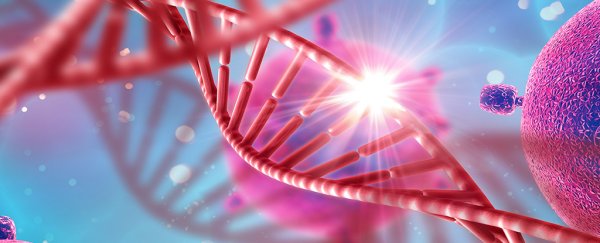Changes to the expression of a gene responsible for managing important chemical messengers that keep glucose and fat metabolism in check could be behind the development of a number of cases of type 2 diabetes.
A new study has advanced earlier research that showed low levels of a protein that bound to insulin-like growth factors made it more likely that mice developed type 2 diabetes. By finding the same effect in humans, we might be able to spot the disease earlier, and maybe even prevent its onset.
Researchers from the German Institute of Human Nutrition Potsdam-Rehbruecke (DIfE) and the German Center for Diabetes Research (DZD) carried out a population-wide study on the back of their earlier studies on insulin-like growth hormone binding proteins and the genes that produce them.
Their findings suggest that for some people, type 2 diabetes could have its roots in the locking of just a single gene.
If you get your different diabetes muddled up, keep in mind type 1 is typically diagnosed early in life, and involves the loss of insulin-production thanks to the destruction of key pancreatic tissues.
Type 2, on the other hand, is a progressive illness that usually develops past middle age. It usually kicks in as a result of various dietary and lifestyle factors, though genetic influences can predispose many people to develop a resistance to insulin in the first place.
As convenient as these two categories are for the time being, diabetes is a complicated condition that we're only beginning to fully understand (and might need a complete rewrite anyway).
This new research shows just how complex the pathology behind type 2 diabetes could be.
Insulin is the usual suspect when it comes to glucose levels going awry. It's the key that unlocks the door for glucose to enter cells and work its magic.
But there is another hormone that helps the body metabolise sugar, called insulin-like growth factor (IGF).
Various types of binding proteins grab onto IGF in the blood-stream and mediate its effects, helping fine tune not just the uptake of glucose, but the liver's production of fat and glycogen.
Changes to the production and distribution of these chemical handcuffs have been linked to the development of type 2 diabetes in the past, making IGF binding proteins an important target for researchers.
One binding protein in particular – IGFBP-2 – has been the subject of ongoing studies. Women who had higher concentrations of this protein in the blood were found to have a reduced risk of developing type 2 diabetes.
Studies carried out on mice suggested low levels of IGFBP-2 predisposed them to fatty liver disease, a condition closely associated with type 2 diabetes. This meant levels of the binding protein were low before the disease had taken hold.
Intriguingly, researchers had found evidence that the binding protein's gene had been silenced by an epigenetic switch – the DNA equivalent of a padlock that can be put in place for various reasons, typically environmental ones.
Their findings suggested that the gene for IGFBP-2 in the liver was edited early in life, setting the mice up for type 2 diabetes later.
Mice models are all well and good, but for human health research what we really need is to find similar evidence in people studies.
So the same research team used data collected as part of a previous study on German health, comprised of individuals aged between 35 and 65.
From just under 28,000 individuals, the researchers matched 300 subjects who had type 2 diabetes with 300 similar controls, and then compared levels of IGFBP-2. They also analysed epigenetic changes to the protein's gene in their blood.
Sure enough, having higher levels of IGFBP-2 was associated with a variety of factors, such as a lower BMI, smaller waist circumference, smaller fatty liver index, and a lower risk of type 2 diabetes.
But for the subjects with type 2 diabetes the same chemical padlock found in the diabetic mice was also more likely to appear, again suggesting that for many people, diabetes could be influenced, if not caused, by epigenetic changes early in life.
"This study is a good example of how translational research works: a clinical finding is taken up, analysed mechanistically in the laboratory and finally examined in a population-wide study," says lead scientist Annette Schürmann.
Not only does this help explain some of the complexity behind the condition, it could lead to better ways of diagnosing or even preventing the disease - long before the trouble begins.
"In the future, our findings may help to identify risk potentials for type 2 diabetes even earlier and help to counteract the disease with preventive measures," says Schürmann.
Roughly 1 in 11 adults worldwide have some form of diabetes, 90 percent of which is of the type 2 variety. Those numbers are steadily going up as well.
Finding ways to limit that growth would save a lot of lives in the future.
This research was published in Diabetes.
